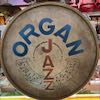Hi everyone, during some of my trips to the US I have been lucky enough to buy some highly figured Maple. I am about to make salt grinders with the timber and I would prefer a finish that does not go yellow. I am in Australia so I won't have access to your brand name finishes. All suggestions will be appreciated.
Thanks,
Rgds,
Richard.




 Reply With Quote
Reply With Quote





